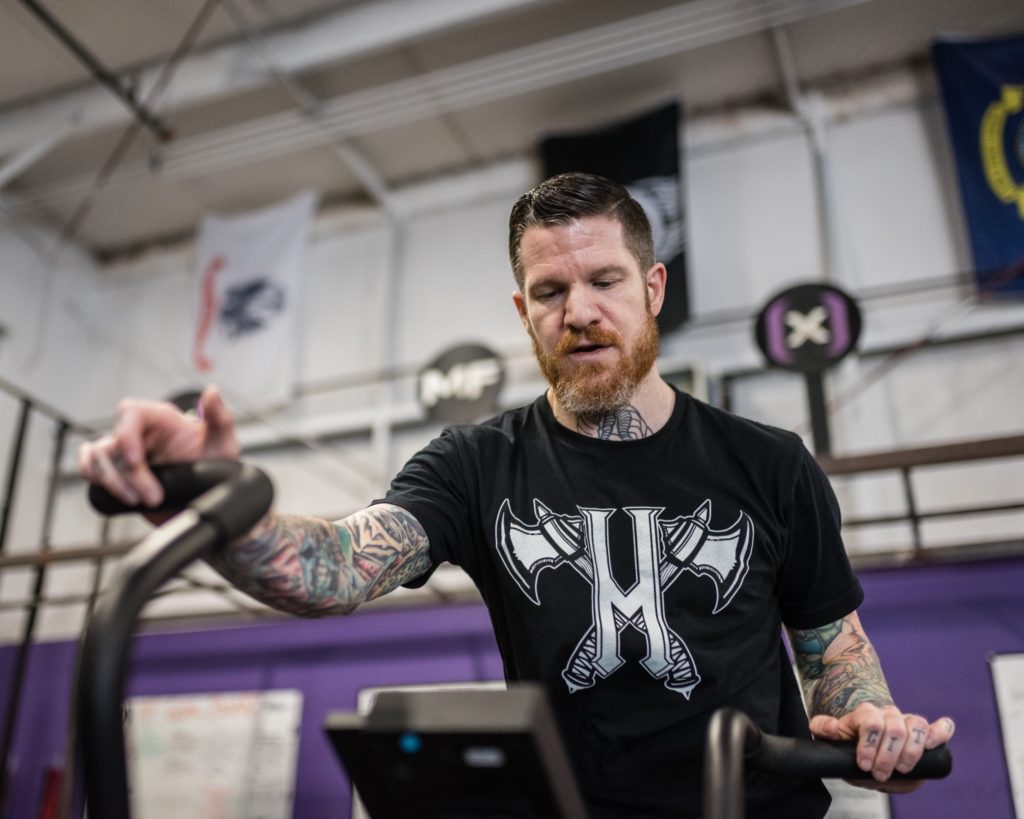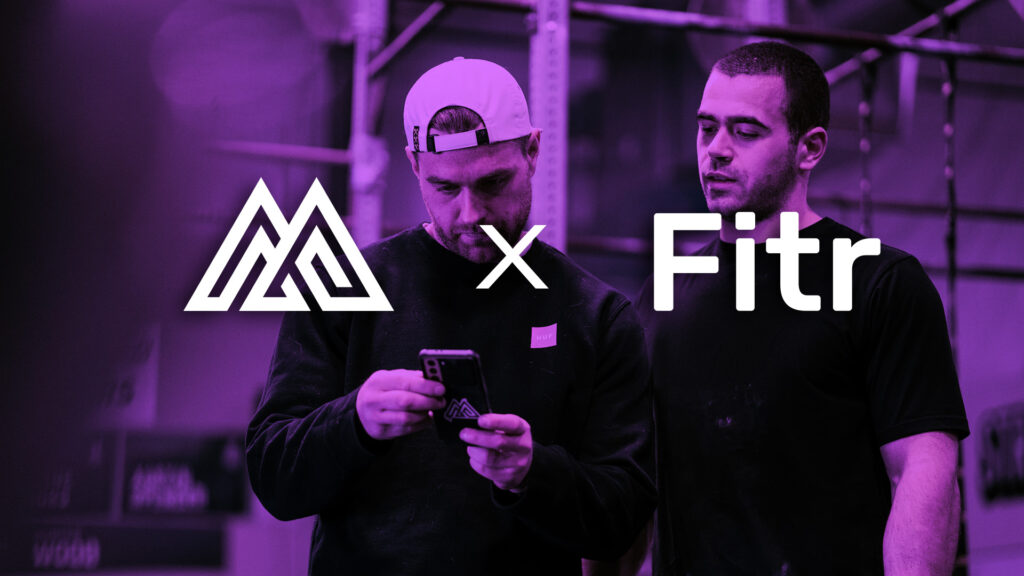The Misfit Athletics Stimulus Package Part 2: Cardio Edition
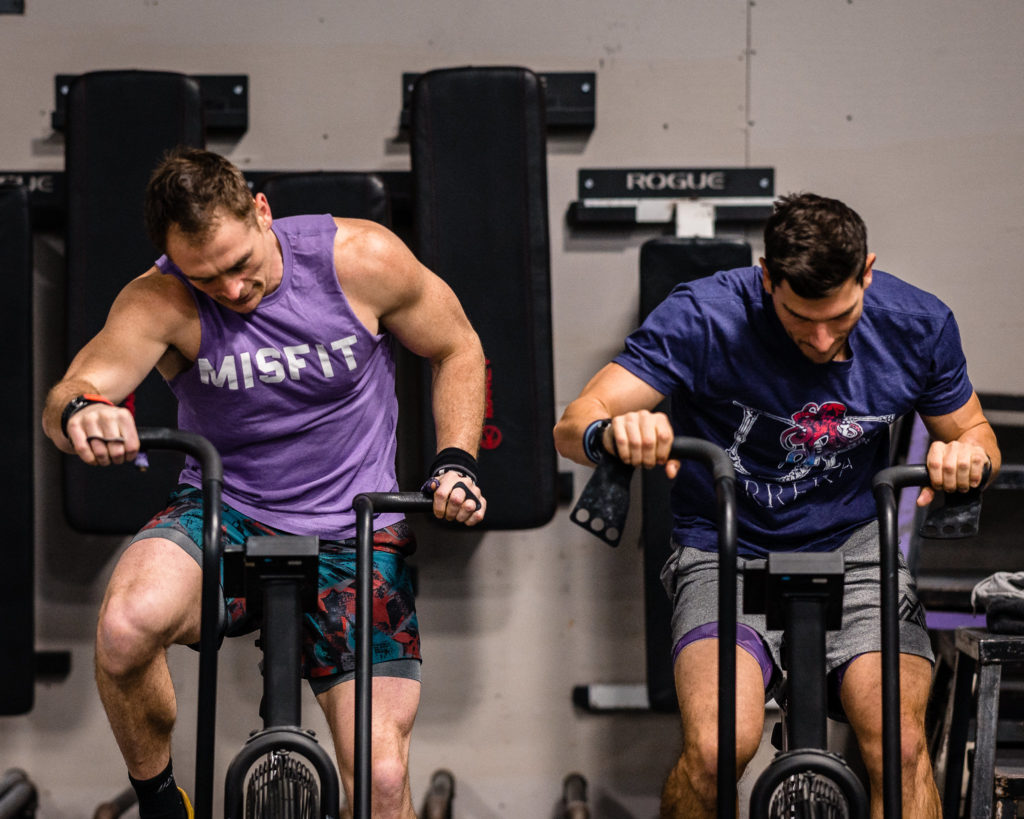
Last month Coach Hunter dropped a very insightful article dubbed “The Misfit Stimulus Package.” The objective of that article was to educate you Misfits on how to train effectively using our program. While it may seem like the goal when training is “going as hard as you can,” this approach to training may hinder your growth as an athlete. Training this way would be akin to dropping someone off into an unfamiliar location with a map without showing them how to use it. Yes, the map does contain information on how to get from point A to point B, but it certainly isn’t the most effective way to guide them. Knowing what to do gets you started; knowing what to do and how to do it will ensure you’re doing it as efficiently and effectively as possible. This know-how isn’t solely for MetCons and Intervals; it’s also an integral part of understanding how to execute monostructural work, AKA cardio effectively.
Each monostructrual piece that you see on MisfitAthletics.com is written with a specific purpose, and we want to simultaneously increase your training knowledge and increase your fitness. Both of these elements are indispensable when it comes time to test your fitness. With that understanding in mind, we believe it’s vital to understand how we think about each monostructural training piece and how we communicate it to you to better understand how to approach and execute.
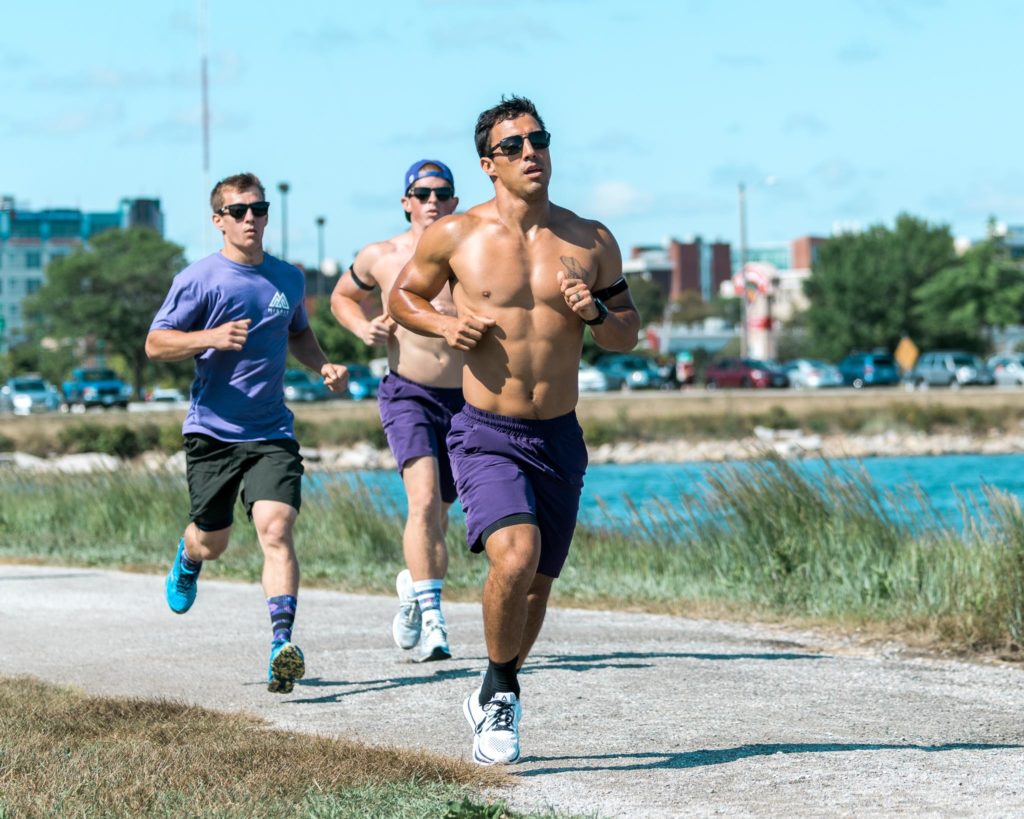
Our Terms
When it comes to monostructural work, you need the ability to go fast, moderate, and slow. You also need to be able to perform tasks that are short, medium, and long. Finally, you need to have built up enough training knowledge to know the “how” and the “what” so you can best determine the “when.” The “how” refers to “how hard to go,” more familiarly known as pacing. The “what” refers to “what it will feel like going at that pace.” When you know how hard to go and what the pace will feel like, you can make a better determination of “when.” “When” refers to “when to push or back off your pace.” Effective pacing is determined by the task at hand and your training knowledge, something we hope you recognize and develop each day you train with us. We believe that experience is the best teacher, we want you to improve your fitness and learn something about yourself each day. There are four main categories of monostructural work from our purview, each with its specific aims. The four types are Send, Reach, Sustain, and Aerobic. Each of these is categorically different from the others and garners a unique physical and mental adaptation.
Send
Of the four main types of mono-structural work, Send might be the easiest to understand and execute. The Send stimulus is all about SPEED and POWER. When the piece is a Send, we look for you to go on the offensive at break-neck intensity because you will not create the adaptation we’re after without it. Typically, you will only see a handful of rounds/intervals due to the crippling efficacy of this stimulus. Examples of a send are:
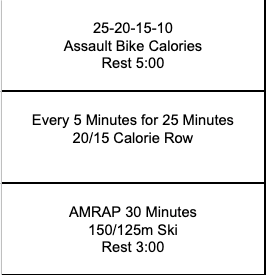
When done at 100% effort and intensity, a significant rest period is required to repeat. Appropriate application of the Send stimulus requires a work-to-rest ratio that begins somewhere around 1:4 work:rest and, on occasion, can increase to nearly 1:10. When you see a rest period that is significantly longer than the working period, that is usually a strong indicator that the goal is “SEND IT.”

Reach
Ratcheting the intensity back a bit, and we have the Reach stimulus. We use this stimulus to help you work towards something like a new PR on a 1000m Row or 5K Run. Unlike Send, where the objective is always about going 1000mph, that isn’t always the case when reaching. The reach pace is meant to be a pace that is faster than you would attempt to hold if you are trying to PR the event. For example, if your goal was to PR your 5K Row at 16 minutes and 30 seconds, your reach pace is holding a pace that is faster than 1:39/500m. The concept of overreaching is an absolute must for effective training. Reach pieces typically do not require the same amount of exorbitant rest that a send piece does. However, to increase your threshold pace, a rest period is an absolute must. We modulate the piece’s intent and intensity by varying the rest period’s duration to create the desired stimulus. A tell-tale sign that a piece is a reach rather than a send is that the work-to-rest ratio is more balanced but should still allow you to repeat a strong effort, even without a complete rest. Examples of Reach training pieces include:

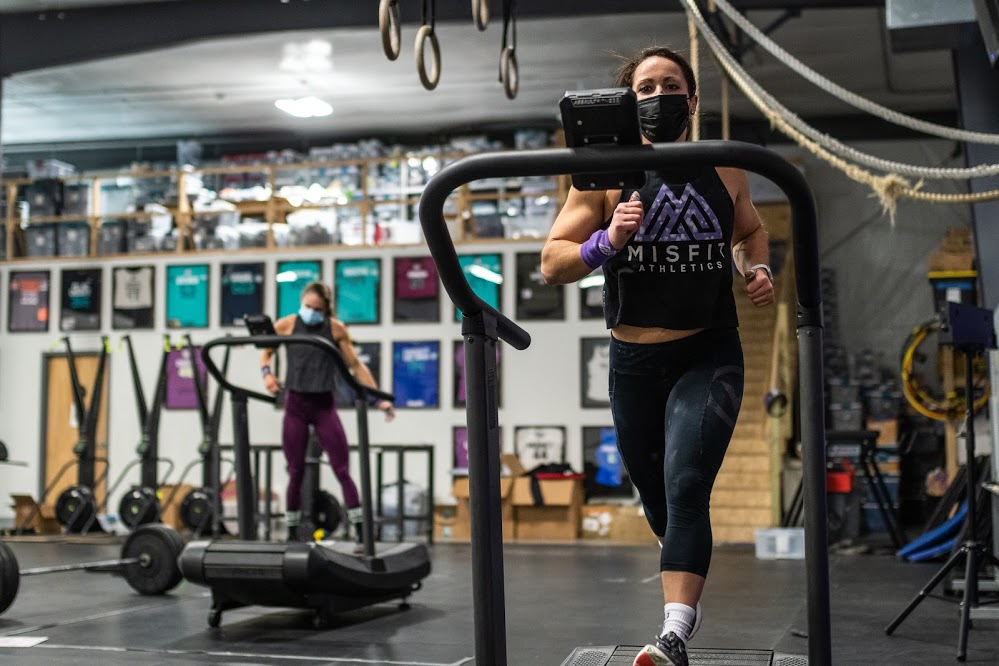
Sustain
Next is the Sustain pace, where you should consider the total volume of the workout and execute a pace that you could sustain for the entire duration, whether it is a continuous effort or not. When training at a sustain pace, you are working on your threshold pace for an event. This pace is noticeably slower than the reach pace but still considerably faster than our last pacing objective, the forever pace. When you see a rest period that is significantly shorter than the working period, that is a sign that the training piece’s aim is to sustain. Examples of Sustain training pieces look like this:

Forever
Finally, we have the Forever pace. The Forever pace is the pace you would attempt to hold to complete a marathon (events 3+ hours in length). This pace should physically feel very easy and should primarily be for working on events that are incredibly long in duration or as a means of recovering between multiple bouts of intervals. Additionally, when training the forever pace, athletes can clean up their movement patterns, breathing cadences, and mental game as the mental challenge is often more difficult than the physical challenge. Athletes should know what their forever pace is on every cardio implement we train with. Despite how readily recognizable they may be, in our opinion, they may be the least understood style of mono-structural training. Examples of aerobic training piece are:


When we ask for a Forever pace, we aim to teach you how to “go long” effectively, and is most commonly thought of as aerobic training, although sustain pacing will usually fall into this category as well. Aerobic training has many positive adaptations (metabolic flexibility, improved recovery, increased lactate threshold, improved cardiorespiratory fitness, increased stamina, etc.) that can occur if trained effectively. However, this training modality is often omitted or done ineffectually in our experience, thus dampening its effectiveness. For many athletes, the difficulty lies not due to the physical challenge but rather the mental one.
We see athletes struggle rationalizing with the concept of going slow and how going slow for significant periods will eventually lead to the ability to go faster, harder, and longer—learning to stay engaged and focused when pacing is typically challenging for a CrossFitter. We’re not known for being very good at pacing. To help you better stay engaged and teach you how to train this stimulus more effectively, you will commonly see parameters set to the training piece that helps evoke an aerobic stimulus. A few examples are SPM/RPMs ranges, damper settings, rest periods, and pacing instructions. We provide you with these parameters because we firmly believe that this training stimulus has the most potential to increase your overall fitness when it comes to mono-structural work, but only if done correctly.

Pacing, and Why You Should Care
Being the CrossFit Games champ sounds pretty badass, don’t you think? Do you know what doesn’t? Sitting on a C2 Bike for 60-90 minutes at a 2:05/1000m pace. Unfortunately for chafed-body-parts-everywhere, we believe this style of training may be what separates the “pretty good” from the “greats.” Don’t believe us? When asked recently about his programming, the 5-time-champ Mat Fraser stated that ramping up to the CrossFit Games that he would train on a spin bike for 60-90 minutes 2-3x a week at a pace slightly above conversational. Two key takeaways? 1) he’s going long (very long for a CrossFitter), and 2) he’s pacing. While some of you may not have the time to add additional sessions that last 60-90 minutes 2-3 days per week, all of you can learn the value of pacing.
You hear us say all the time that training is about experiences. When it comes to aerobic stimulus, we often do not see athletes fail to achieve the desired experience. The reason? Deliberate focus on pacing. To elicit the desired experience, you must be laser-like with how you pace yourself so that you can learn about how both your mind and body adapt to going long. As stated earlier, pacing isn’t necessarily a strength for CrossFitters, and to effectively train the aerobic pathway, pacing yourself is non-negotiable. We don’t think any of you would try to PR your 2K row by sprinting the first 250m, so why would you take the same approach to a 10K Run? Learning to be slow and steady goes against everything we’ve learned about training with intensity because it feels “too easy” but is a must for effective aerobic training. When working on pacing, you should always aim to be consistent with your splits. We do not want to see you “gaming it” to achieve the desired average split time.
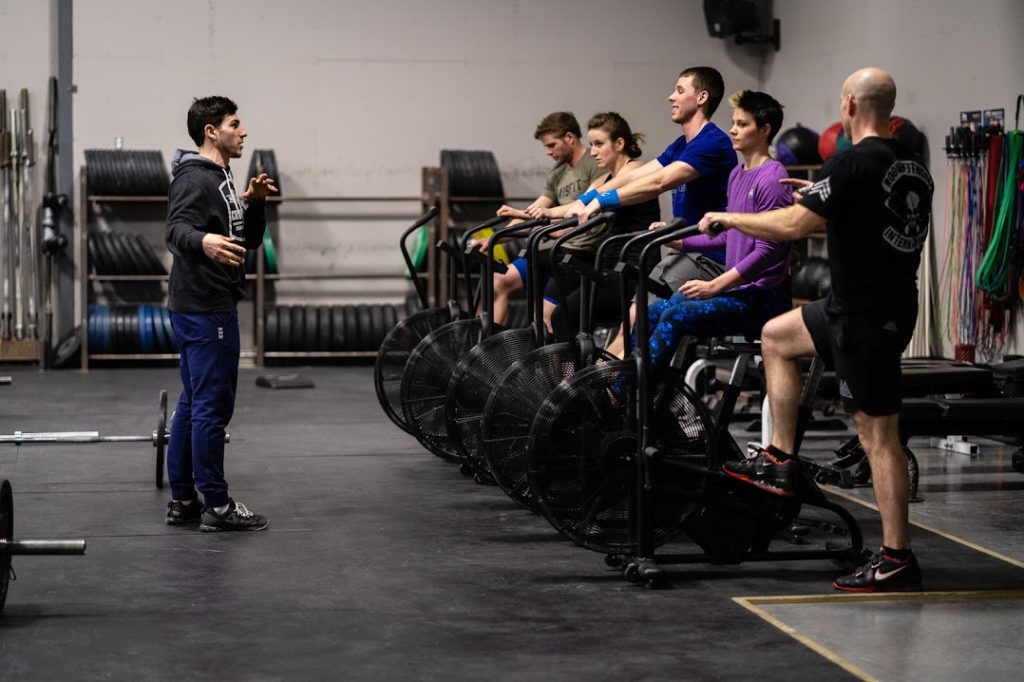
Action Steps
Now that you are armed with the knowledge of the stimuli and how to execute each, it’s now time to talk about the action steps you can take to ensure you’re getting all that you can from your mono-structural work. Step one is asking yourself, “what is this training piece trying to develop?” Before you can determine whether or not you need this training piece, you must understand the objective. Taking additional time to read and synthesize a piece takes practice, but this habit ensures that you are being efficient with your training. Step two is asking yourself, “do I need this piece?” Like your other conditioning pieces, mono-structural work programmed for the masses is wide-ranging and may not directly address your needs as an athlete. We often see athletes doing what they like to do rather than what they should do. As fun as it is to hammer your strengths, there’s more value in addressing your weaknesses. Step three is goal setting. After committing to a training piece, set goals for yourself. These goals can be both subjective and/or objective, but goal setting is a must because the final step is reflection. Step four is executing your game plan to the best of your ability before moving on to the last step, which is reflection. In step five, you evaluate how well you executed your plan. Once you’ve cooled down, ask yourself, “what went well/did not go well,” “how it felt,” “did you stick to your pacing or did you go too fast/too slow,” “what could you do better,” etc. Proper reflection is another way that an elite CrossFitter separates themselves from the casual exerciser. Reflection is a huge part of growth, and without it, there is no way to ensure you’re headed in the right direction.
Finally, you must recognize that your growth as an athlete is ever-evolving. As long as you continue to pursue your potential, you’ll always be “on your way” rather than “there.” As you continue developing your capacity and knowledge, you should always be setting your sights on your next milestone because the continual pursuit of bettering yourself is what training is all about. Therefore, before you kick the tires on and hit your next mono-structural piece with us, work through the aforementioned action steps and reap the benefits of more effective mono-structural training.
Written by Matt Sherburne


